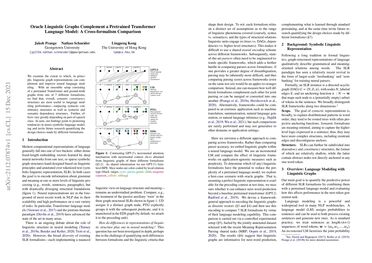Linguistic Frameworks Go Toe-to-Toe at Neuro-Symbolic Language Modeling
We examine the extent to which, in principle, linguistic graph representations can complement and improve neural language modeling. With an ensemble setup consisting of a pretrained Transformer and ground-truth graphs from one of 7 different formalisms, we find that, overall, semantic constituency structures are most useful to language modeling performance -- outpacing syntactic constituency structures as well as syntactic and semantic dependency structures. Further, effects vary greatly depending on part-of-speech class. In sum, our findings point to promising tendencies in neuro-symbolic language modeling and invite future research quantifying the design choices made by different formalisms.
PDF Abstract NAACL 2022 PDF NAACL 2022 Abstract


 Universal Dependencies
Universal Dependencies